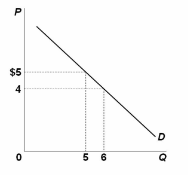What is the free-rider problem? Why do free riders make the private provision of a public good inefficient?
What will be an ideal response?
If a firm were to provide a public good, it would suffer from the free-rider problem, which arises when non-paying consumers consume the public good without paying, enjoying a "free ride." Public goods are, in part, characterized by inability to exclude nonpaying consumers. A private firm would not receive a sufficient level of revenue to provide the efficient level of the public good.
You might also like to view...
What is the rule for efficient output selection and how does the competitive market achieve it?
A merger between an automobile manufacturer and a maker of automobile tires is an example of a:
A. conglomerate merger. B. horizontal merger. C. vertical merger. D. tying contract.
Desired consumption is Cd = 2000 + 0.9Y - 100,000r - G, and desired investment is Id = 1000 - 45,000r. Real money demand is Md/P = Y - 6000i. Other variables are ?e = 0.03, G = 500,  = 1000, and M = 2100.(a)Find the equilibrium values of the real interest rate, consumption, investment, and the price level.(b)Suppose government purchases decline to 400. What happens to the variables listed in part (a)? (c)Suppose government purchases rise to 600. What happens to the variables listed in part (a)? (d)What feature in this example leads to the result that you don't need to know the amount of taxes collected by the government to find the equilibrium?
= 1000, and M = 2100.(a)Find the equilibrium values of the real interest rate, consumption, investment, and the price level.(b)Suppose government purchases decline to 400. What happens to the variables listed in part (a)? (c)Suppose government purchases rise to 600. What happens to the variables listed in part (a)? (d)What feature in this example leads to the result that you don't need to know the amount of taxes collected by the government to find the equilibrium?
What will be an ideal response?
The diagram indicates that the marginal revenue of the sixth unit of output is:

A. -$1.
B. $1.
C. $4.
D. $24.